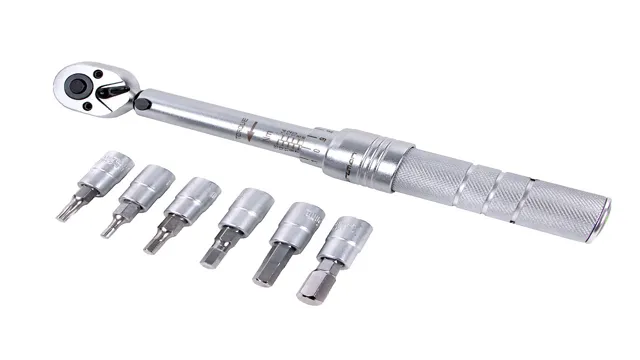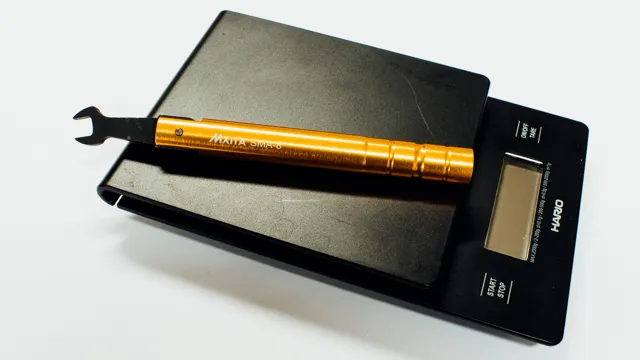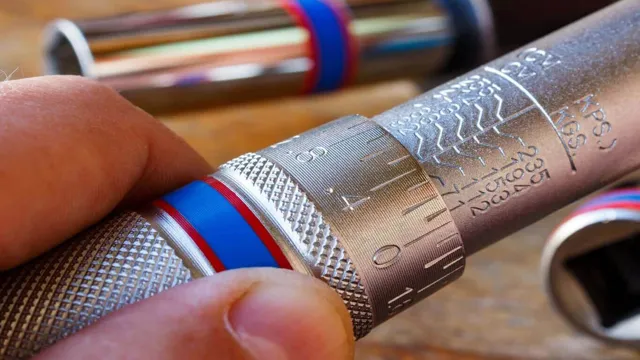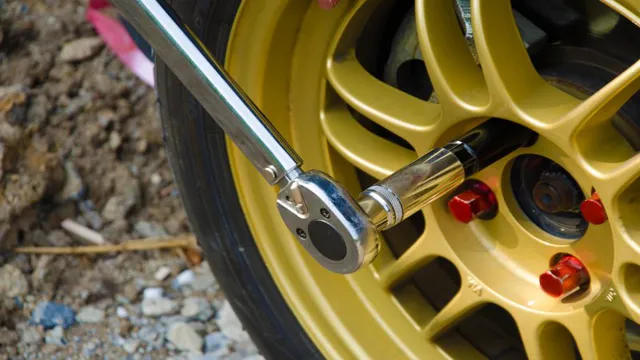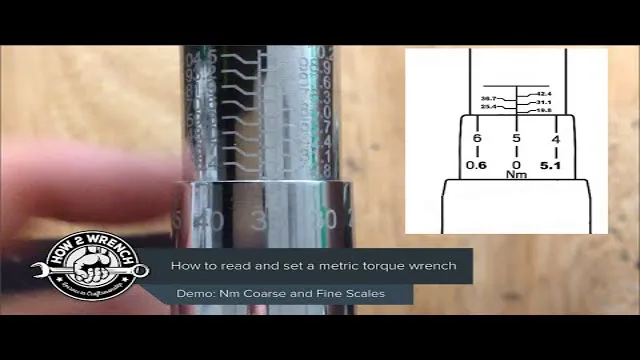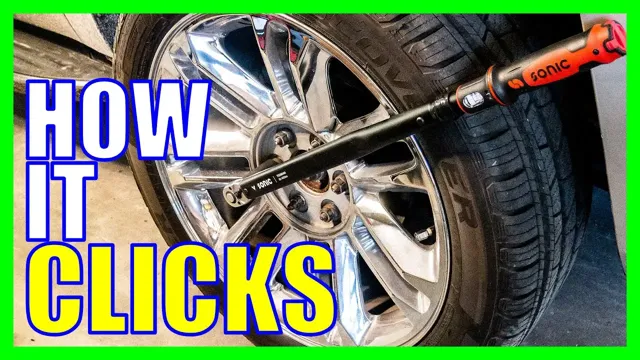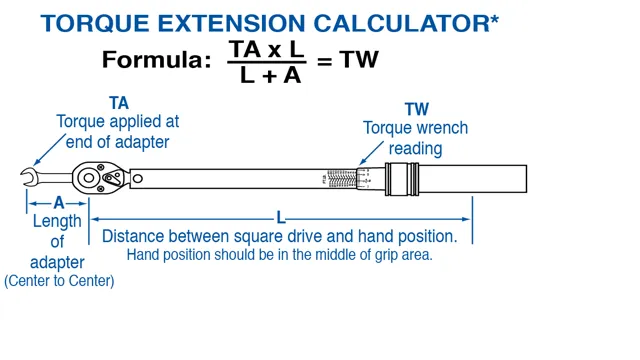What Does a Torque Wrench Measure: A Comprehensive Guide

Have you ever struggled with a loose bolt or nut that just won’t tighten no matter how much elbow grease you put into it? It can be frustrating, not to mention potentially dangerous if the bolt or nut holds a crucial component in place. This is where a torque wrench comes in handy – but what exactly does it measure? A torque wrench is a tool used to tighten bolts and nuts to a specific torque, or rotational force. It measures the amount of force being applied to the bolt or nut, which is expressed in units of torque such as foot-pounds or newton-meters.
Think of it as a sort of “measurement calculator” for tightening bolts and nuts – it shows you exactly how much force you’re applying, so you can ensure that it’s neither too loose nor too tight. Without a torque wrench, it can be difficult to know how much force to apply, and guessing or using too much force can lead to stripped threads, broken components, or even injury. A torque wrench takes the guesswork out of the equation and ensures that your bolts and nuts are tightened to the correct specifications.
So, if you’re working on a project that requires precise torque measurements, or just want to make sure your car’s lug nuts are tightened properly, a torque wrench is an essential tool to have on hand. With a little practice and the right technique, you can use it to get the perfect amount of torque every time.
Definition and Importance of Torque
A torque wrench is a specialized tool used to apply a specific amount of torque to a fastener or bolt. Torque is a measure of the twisting force applied to an object, and it is typically measured in units of pound-feet or Newton-meters. The importance of using a torque wrench cannot be overemphasized, as the correct amount of torque is essential to ensure that a fastener is properly tightened and will not loosen over time due to vibration or other forces.
Failure to use a torque wrench can result in over-tightening or under-tightening of fasteners, which can lead to expensive repairs or even safety hazards. A torque wrench is especially crucial when working with critical components such as engines, wheels, and suspension systems. So, whenever the question arises, “What does a torque wrench measure?” the answer is the amount of twisting force applied to a fastener, which is essential for ensuring optimum performance, safety, and longevity of the equipment.
Why Knowing Torque is Critical
Torque is a term used to describe the rotational force applied to an object. In simple terms, it is the force required to rotate an object around a fixed axis. The importance of torque lies in its ability to bring about motion in a rotating object.
Measuring torque accurately is critical in many applications, such as in the design and testing of mechanical systems and in the automotive industry. Torque plays a vital role in calculating the power output of an engine. In the case of a car, it determines the vehicle’s ability to accelerate, tow, and climb steep inclines.
Without torque, we wouldn’t be able to build machines that perform useful work, and we wouldn’t be where we are today in terms of technological advancements. Understanding the concept of torque is essential for anyone seeking to design and build mechanical systems that can perform specific tasks efficiently.
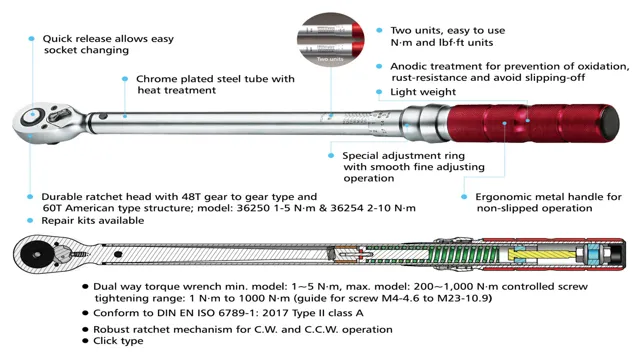
Basics of Torque Wrenches
Torque Wrenches Torque can be defined as the amount of force required to rotate an object about an axis. This metric is particularly important when it comes to assembling parts of machinery and other mechanical applications. Torque wrenches are tools designed to measure the amount of rotational force applied to a bolt or a nut.
The importance of torque lies in ensuring that the components of a machine are assembled to the correct specifications. If the bolts are too loose, the parts may not function correctly, whereas if they are tightened too much, it may result in damage or failure of the parts. Torque wrenches provide a precise and accurate way of applying the right amount of torque to achieve the desired outcome.
The use of torque wrenches is therefore vital in many settings, ranging from automotive repair to construction. By measuring the amount of torque required to fasten bolts, safety is ensured, and the lifespan of the machinery is also extended.
How Does a Torque Wrench Work?
A torque wrench is a specialized tool that is used to measure and apply a specific amount of torque to a bolt or nut. A torque wrench works by using a calibrated spring or hydraulic mechanism that allows the user to set a specific level of torque. Once the wrench is set, it will stop applying force once the desired level of torque is reached.
This is important because over-tightening bolts can result in damage to the material being fastened or the bolt itself. Conversely, under-tightening can result in joints that are not secure or may even come apart. By using a torque wrench, users can ensure that they apply the correct amount of force to a bolt or nut, ensuring that the joint is properly secured and preventing damage to the materials being fastened.
Overall, a torque wrench is an essential tool for anyone who works with mechanical components or who wants to ensure that their bolts are properly tightened.
Internal Mechanics of a Torque Wrench
A torque wrench is a specialized tool used to tighten bolts to a specific torque value. Inside the wrench, there is a mechanism that allows the user to set the desired torque value. Once set, the wrench will tighten the bolt until it reaches that value.
This mechanism is usually a spring and a lever arm that is calibrated to a specific torque value. The user pulls on the lever arm until the desired torque value is reached, and the spring inside the wrench compresses. Once the spring is compressed to the desired torque value, the wrench will “click,” indicating that the bolt has been tightened to the correct torque value.
This mechanism is critical to ensure that bolts are tightened to the appropriate torque value, as over- or under-tightening can cause significant mechanical issues. Using a torque wrench provides more precision and accuracy when tightening bolts than using a regular wrench, making it an essential tool in many industries such as automotive, aviation, and construction.
Different Types of Torque Wrenches
Torque wrenches are essential tools used by mechanics when tightening bolts or nuts to a specific torque level. This measurement is vital to ensure that the bolt or nut can withstand the load it is subjected to without breaking or loosening. There are different types of torque wrenches: click-type, beam-type, digital, and hydraulic torque wrenches.
All of them work by applying a specific force to the bolt or nut, measured in pound-feet or Newton-meters, to tighten it accurately. The click-type wrenches make a clicking sound once the desired torque is reached, while beam-type wrenches show the level of force applied by deflecting their beam. Digital wrenches show the torque level on their display, while hydraulic wrenches operate by applying hydraulic pressure to the bolt.
In any type of torque wrench, the force applied should be at a 90-degree angle to the bolt to ensure accuracy. With the right torque wrench, mechanics can achieve the desired torque level with ease, increasing the safety and durability of the equipment they work on.
How to Read Torque Wrench Measurements
A torque wrench is a specialized tool used for tightening bolts to a precise degree of tightness. The way it works is by applying force to a bolt in a controlled manner, ensuring that it is tightened to the manufacturer’s specifications. The force applied is measured in foot-pounds or Newton-meters and is usually indicated on a scale engraved on the wrench.
As you tighten the bolt, the wrench will click or give some other audible or visual signal when the desired torque has been reached. This prevents over-tightening, which can warp or strip the bolt, and under-tightening, which can result in loose connections and potential failures. Once you’ve used a torque wrench a few times, it’ll become second nature to read the measurements and tighten bolts correctly every time.
When and How to Use a Torque Wrench
What does a torque wrench measure? A torque wrench is a tool designed to measure the amount of torque or rotational force applied to a fastener or bolt. It works by using a calibrated scale or digital readout to display the amount of applied force in units of foot-pounds or newton-meters. This measurement is important when it comes to tightening fasteners correctly, as over-tightening can lead to damage or failure, while under-tightening can result in loose or unsafe connections.
Torque wrenches are essential in many industries, including automotive, construction, and aviation, where proper torque values are critical for safety and performance. They come in various types and sizes, such as beam and click torque wrenches, and should always be calibrated and used according to the manufacturer’s instructions for accurate and reliable readings.
Importance of Proper Torque
Proper torque is crucial to ensuring the integrity and safety of mechanical assemblies. It’s important to follow the manufacturer’s recommended torque specifications to avoid over-tightening or under-tightening. Using a torque wrench is the most accurate and efficient way to achieve the required torque.
When tightening a bolt or nut, wait until you hear an audible click or feel a physical indication that the desired torque has been achieved. This ensures that the fastener is tightened to the correct specifications. Additionally, it’s important to periodically recalibrate your torque wrench to ensure it’s still functioning accurately.
Remember, proper torque can prevent mechanical failures, improve efficiency, and guarantee safe operations.
Steps for Using a Torque Wrench Safely
Using a torque wrench can be intimidating, but with the right steps, it can be done safely and effectively. Firstly, it’s important to know when a torque wrench should be used. Any job that involves tightening bolts or screws, particularly on engines or machinery, will require a torque wrench.
Secondly, when using a torque wrench, make sure to start with the lowest setting and work your way up gradually. This will prevent over-tightening and potential damage to the bolt or equipment. Additionally, be sure to use the correct socket size and orientation of the wrench to ensure accuracy.
Lastly, always refer to the manufacturer’s specifications for torque settings and be mindful of any specific instructions. By following these steps, a torque wrench can be an essential tool for completing jobs with precision and safety.
Conclusion and Final Thoughts on Torque Wrenches
In conclusion, a torque wrench is like a love potion for your bolts and nuts. It measures the amount of force applied to them, ensuring that they are tightened just the right amount. It’s like a personal trainer for your tools, helping them reach their maximum potential without overexerting themselves.
So remember, when it comes to tightening bolts and nuts, let a torque wrench be your wingman and watch the magic happen!”
FAQs
How does a torque wrench work?
A torque wrench measures the twisting force on a bolt or nut, and alerts the user when the desired level of torque is reached.
What is the difference between a torque wrench and a regular wrench?
A torque wrench is designed to measure and apply a specific amount of torque, while a regular wrench is simply used to tighten or loosen bolts or nuts.
How accurate are torque wrenches?
Torque wrenches can be very accurate, with some models capable of measuring torque within a few percentage points.
Do I need a torque wrench for automotive work?
Yes, a torque wrench is necessary for many critical automotive tasks, such as tightening cylinder head bolts and wheel lug nuts to the manufacturer’s specifications.
Are there different types of torque wrenches?
Yes, there are several types of torque wrenches, including click-type, beam-type, and digital torque wrenches.
Can I use a torque wrench on any size bolt or nut?
Generally, torque wrenches are designed to work with specific size ranges of bolts and nuts. It is important to use the correct size torque wrench for the job.
How often should I calibrate my torque wrench?
It is recommended to calibrate your torque wrench at least once per year, or after any significant impact or drop that may affect its accuracy.

